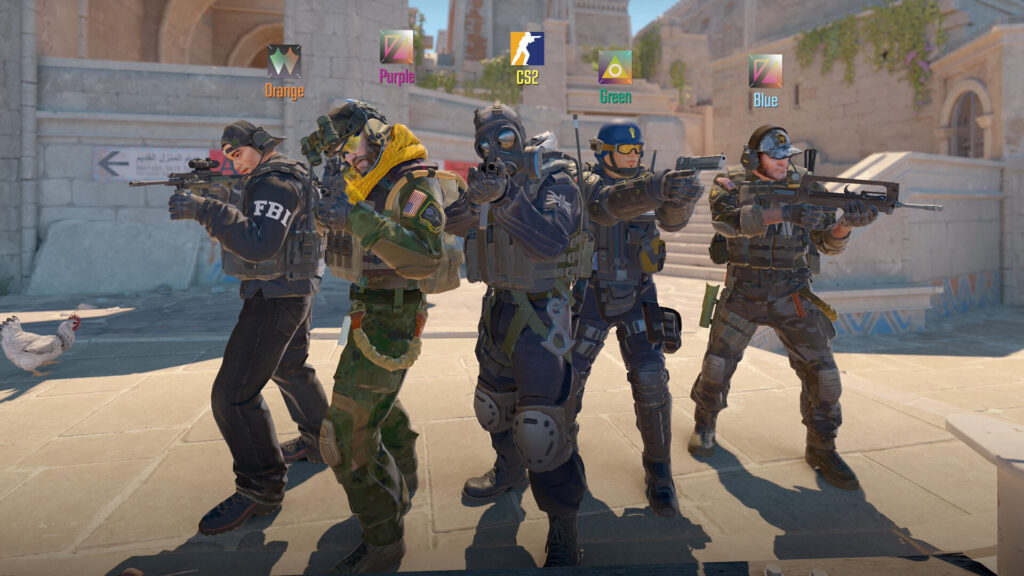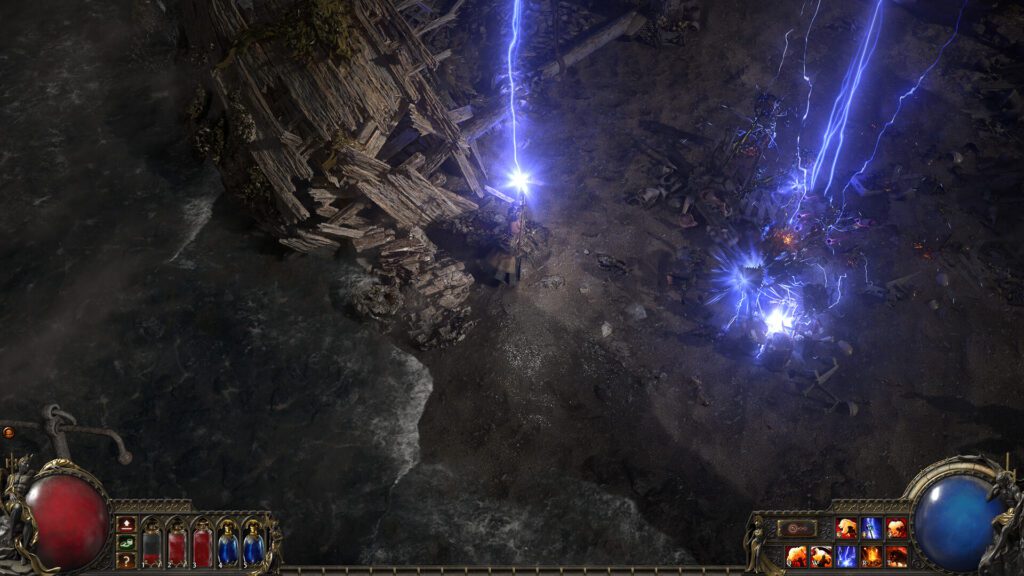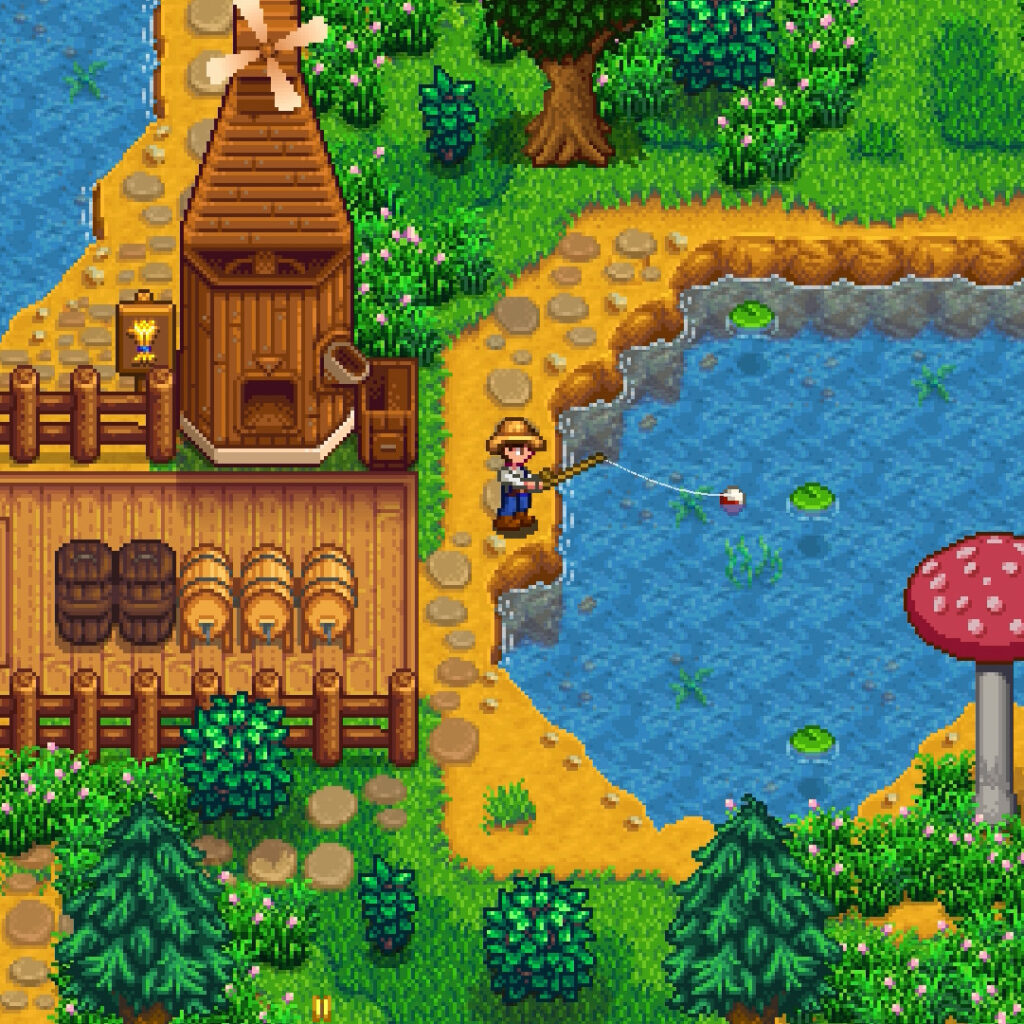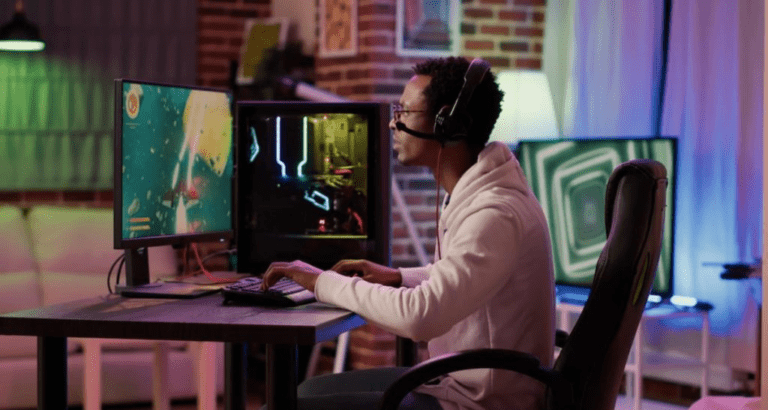You know the feeling: sitting down at a computer ready to play, your left hand just naturally finds its spot: pointer finger on W, middle finger on S, ring finger on A, and maybe pinky hovering over Shift or Control.
These four keys are the go-to way to move your character in a massive number of computer games. They are so common that we often talk about games built around this setup as WASD games.
But why do certain types of games use them, and what are the good and not-so-good things about controlling movement this way? Let’s break it down, look at some examples, and understand why WASD is such a big part of PC gaming!
What WASD games are all about (and the genres that love them)

At its core, a WASD game is simply a PC video game where you use the W, A, S, and D keys on your keyboard as the main way to move your character around.
W usually makes you move forward, S makes you move backward, A makes you move/strafe left, and D makes you move/strafe right. As those keys are located next to each other, your left hand can handle all the movement buttons without having to stretch or move awkwardly, leaving your right hand completely free.
So, what does your right hand do? Almost always, it’s on the mouse for other important actions that you often need to do at the same time as moving.
And this setup fits perfectly with certain types of games: first-person shooters (FPS) and third-person shooters (TPS) are prime examples. In games like these, you constantly need to be on the move while also aiming your weapon at your foes. With WASD for movement and the mouse for looking around, you can do both actions at the same time.
Similarly, action RPGs, adventure/exploration games, or hack-and-slash games also often use WASD-based controls. Even some isometric (viewed from a top-down angle) and simple top-down games might use WASD for direct character movement.
The good and bad sides of WASD game controls

Like any control method, using WASD for movement has its upsides and downsides when we compare it to other ways of playing, like using a gamepad with analog sticks or games where you just click the mouse to move.
For most people who play games on a computer, familiarity is a huge plus. Being how many of us learned to move in 3D games, WASD feels natural and comfortable. It offers precise directional input: for example, when you press W, you go forward.
You get distinct digital signals for moving in exactly four (or eight, including diagonals) directions, which is really good for games that involve tactical movement or moving along grid lines.
A major advantage, as we talked about, is hand independence – WASD completely frees up your right hand and the mouse to do something else at the exact same time.
The proximity to action keys is also a big deal. The keys immediately around WASD are conveniently positioned for your left hand’s fingers, creating a comfortable little cluster for all your important actions like jumping, sprinting, crouching, or using abilities.
However, one of the main limitations is the lack of true analog input. On a standard keyboard, pressing a key is either “on” or “off,” so you’re either moving forward at full speed or you’re not moving forward at all. In other words, you can’t control speed just by lightly pressing the key (unless the game adds a separate “walk” button).
The movement itself is limited to moving directly forward, back, left, right, or the four diagonal combinations. While you can look around with the mouse to achieve full 360-degree control over your direction, the basic movement input is less fluid than the all-direction input of an analog joystick.
Finally, in very fast-paced games, the relatively static position of the hand on WASD over a long time might lead to hand fatigue compared to the rather relaxing grip used on a controller.
6 famous WASD games you might know
Many extremely popular and influential PC games across a variety of genres have WASD as their standard way to control movement, proving how well this control scheme works for different types of gameplay. Let’s see some examples:
Vampire Survivors

This incredibly popular indie game is all about surviving against endless waves of monsters. Your character automatically attacks based on the weapons you gather, so your only job is to move (and select upgrades)!
WASD (or the arrow keys) is the simple, direct way to control your character’s direction as you dodge enemies, position yourself to hit them with your automatic attacks, and strategically move to collect items and experience points. While the mouse can be used as a joystick, it’s 100% possible to play the game with a single hand.
Counter-Strike 2

In Counter-Strike 2 (previously known as CS:GO), precise movement is just as vital as aiming. WASD provides the fundamental control for everything from walking and running to side-to-side strafing. Your right hand is completely dedicated to using the mouse for pixel-perfect aiming, looking around the environment, and firing your weapon.
World of Warcraft (WoW)

This successful MMORPG has been around for ages. While some older games used mouse-clicking to tell your character where to walk, WoW primarily uses WASD for direct movement.
Your left hand controls where you walk or run, while your right hand controls the camera, clicks on enemies (or press tab) to select them, and interacts with the game world. The keys immediately around WASD are used with your left hand to activate a huge variety of skills quickly.
Path of Exile 2

Interestingly, the original Path of Exile game requires mouse clicks to tell the character where to move. However, the second iteration of the game added WASD as an alternative movement option, and players loved it.
If you choose to use WASD, your left hand controls your character’s exact movement, freeing your right hand on the mouse entirely to aim your skills at enemies, offering a different feel compared to the traditional click-to-move style.
Grand Theft Auto V (GTA V)

An incredibly successful open-world action-adventure game played from a third-person view (with a first-person option added later).
On the PC version, WASD is the standard way to control your character’s movement when they are on foot or piloting something. As you might guess by now, the mouse is used for controlling the camera view and for precise aiming and shooting during the game’s many action sequences, separating movement from looking and interacting.
Stardew Valley

A beloved independent farming and life simulation game played from a top-down view. While many people play it with a controller, the default keyboard controls for the PC version use WASD for moving your character around your farm, the nearby town, and the mines.
Using WASD for movement leaves your mouse hand free to easily manage your inventory, select and use tools (like the hoe or watering can), target specific squares on the ground to farm or mine, and interact with people and objects, creating an efficient control setup for its relaxed but busy gameplay loop.
WASD games share a timeless charm tied directly to the PC experience
To recapitulate, WASD games are defined by using those four keys for controlling character movement – a method that has become a staple of PC gaming. This control setup is preferred for games where you need to move constantly and also aim or interact precisely at the same time, mainly because it leaves your mouse hand completely free for those other actions.
While WASD offers a control method that feels familiar and tactile to many, provides clear directional input, and places action keys within easy reach, it does lack the smooth, variable speed control that you get from an analog stick on a controller. Despite that difference, WASD-based controls are incredibly popular and effective for games across many genres!
Creating a great video game takes a lot of hard work, talent, and expertise. At Main Leaf, we partner with developers and publishers to help bring their ambitious ideas to life, offering skilled development and outsourcing services for all things game design and development. Let us apply our experience to your project and help you build the perfect game you envision!

